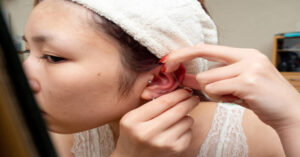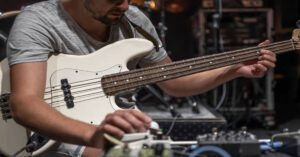The subject of breast size is often discussed in terms of bra cup letters, yet very few people fully understand what those letters actually mean in practical, anatomical, and lifestyle contexts. A C cup breast size is often considered a moderate size in many sizing charts, but perceptions vary significantly depending on the individual’s body frame, height, and proportions. In this guide, we will go far beyond the surface-level idea of “cup size” and dive into what a C cup really is, how it is measured, how it looks on different bodies, its health implications, style considerations, and important care tips.
By the end, you will have a clear understanding of:
- How bra sizing works and where “C” fits in
- How C cup looks on different body frames
- How to measure yourself correctly for a C cup bra
- Choosing the best bra styles for comfort and support
- Maintaining breast health at any cup size
- Myths and facts about C cups
1. Understanding Bra Cup Sizes
To begin, it’s essential to clarify what a bra “cup” size represents. A cup letter is not an absolute size in isolation — rather, it is a measurement of the difference between your bust circumference and your band size.
Bra sizing uses two measurements:
- Band Size – The circumference around the ribcage, just under the breasts.
- Bust Measurement – The circumference around the fullest part of the bust.
The cup size is determined by subtracting the band size from the bust measurement. Each inch difference typically corresponds to a cup letter, although sizing can vary slightly between regions and brands.
Example of Cup Sizing in Inches:
| Difference (Bust – Band) | Cup Size |
|---|---|
| 1 inch | A cup |
| 2 inches | B cup |
| 3 inches | C cup |
| 4 inches | D cup |
So, if your underbust measures 34 inches and your bust measures 37 inches, the difference is 3 inches, which usually corresponds to a C cup.
2. What Exactly Is a C Cup Breast Size?
A C cup breast size is often described as moderate and balanced — larger than an A or B cup, but not as full as a D or DD cup. However, this description only tells part of the story, because the visual appearance of a C cup is highly dependent on band size.
For example:
- 32C – The breasts are relatively smaller in volume compared to a 38C, because the band size is smaller.
- 38C – The breasts are larger in overall volume than a 32C, even though the cup letter is the same.
This phenomenon is called “sister sizing” — a concept that explains how cup volume changes with band size.
Cup Volume in Different Band Sizes (Sister Sizes)
| Band Size | Cup Volume Comparable To |
|---|---|
| 30D | 32C |
| 32C | 34B |
| 34C | 36B |
| 36C | 38B |
This table illustrates that the same cup letter does not mean identical breast volume across all band sizes.
3. How a C Cup Appears on Different Body Frames
The proportional appearance of a C cup breast size varies dramatically based on:
- Chest width – Wider ribcages can make the bust appear smaller proportionally.
- Height – Taller individuals may appear to have smaller-looking breasts than shorter individuals with the same cup size.
- Body fat percentage – Affects fullness and projection.
- Muscle development – Can influence chest shape and positioning.
For example:
- On a petite person with a small frame, a C cup breast size can look full and prominent.
- On a tall, broad-shouldered person, the same C cup may appear more subtle and balanced.
4. How to Measure Yourself for a C Cup Breast Size
Accurate self-measurement ensures the correct fit and comfort.
Step-by-Step Guide:
- Measure the Band Size
- Stand straight and wrap a soft measuring tape around your ribcage directly under your bust.
- Keep the tape snug but not tight.
- Round to the nearest whole number.
- If the number is even, add 0 inches. If odd, round up to the next even number.
- Measure the Bust
- Measure around the fullest part of your bust.
- Keep the tape level around your back.
- Avoid pulling too tightly; let the tape rest naturally.
- Calculate the Difference
- Subtract band size from bust size.
- A 3-inch difference generally indicates a C cup.
Example:
- Underbust: 34 inches → Band size: 34
- Bust: 37 inches
- Difference: 3 inches → C cup
5. Styles of Bras Best Suited for a C Cup
A C cup breast size often offers flexibility in bra choice because it is not at the extremes of size. You can opt for comfort, support, or enhancement depending on your needs.
Recommended Styles:
- T-Shirt Bra – Smooth finish for everyday wear.
- Balconette Bra – Lifts and shapes, ideal for open necklines.
- Full Coverage Bra – For maximum support, especially for active days.
- Push-Up Bra – For added cleavage when desired.
- Wireless Bra – For comfort during long wear without underwires.
Comparison of Bra Styles for C Cups
| Bra Style | Support Level | Shape Effect | Comfort Rating |
|---|---|---|---|
| T-Shirt | Medium | Smooth & natural | High |
| Balconette | Medium-High | Lifted & rounded | Medium |
| Full Coverage | High | Contained & secure | Medium-High |
| Push-Up | Medium | Enhanced cleavage | Medium |
| Wireless | Medium | Natural silhouette | Very High |
6. Health Considerations for a C Cup Size
Although breast size itself does not directly determine health, it can influence comfort, posture, and clothing choices.
Common Considerations for C Cup Wearers:
- Posture Support – Maintaining good posture prevents strain on the back and shoulders.
- Sports Support – Choosing a supportive sports bra is essential during high-impact activities.
- Skin Care – Prevent chafing under the bust by keeping the area dry.
- Breast Self-Checks – Regular self-examination helps in early detection of any changes.
7. Myths and Facts About C Cup Breasts
| Myth | Fact |
|---|---|
| C cups are the same size for everyone. | Volume varies with band size. |
| C cup is “average” in all countries. | Average sizes differ globally. |
| C cups don’t need special support. | All sizes benefit from proper bra fit. |
| C cups never cause back pain. | Poor posture or ill-fitting bras can still cause pain. |
8. C Cup Size in International Sizing
Different countries have different bra size systems. A C cup in the U.S. may translate differently in the U.K., EU, or Asia.
| US Size | UK Size | EU Size | Australia |
|---|---|---|---|
| 34C | 34C | 75C | 12C |
| 36C | 36C | 80C | 14C |
9. Caring for C Cup Breasts and Bras
- Rotate Bras – Avoid wearing the same bra two days in a row to let elastic recover.
- Hand Wash – Extends the life of bras and maintains cup shape.
- Avoid Heat – High dryer heat damages elasticity.
- Replace Regularly – Every 6–12 months or when support decreases.
10. Psychological and Social Perceptions of C Cup Size
C cup breasts are often perceived as balanced — not too large, not too small. However, personal comfort and self-image matter far more than social opinion.
Body positivity movements emphasize that every size is beautiful and that health, comfort, and self-confidence outweigh societal ideals.
11. Pregnancy, Weight Change, and C Cups
Breast size is not static — pregnancy, breastfeeding, hormonal changes, and weight fluctuations can cause a C cup to increase or decrease.
A flexible mindset toward sizing helps avoid frustration during these natural changes.
12. Exercise Considerations for C Cup Breasts
While C cups are not typically as heavy as larger sizes, they still benefit from sports bras during activities such as running, HIIT, or aerobics. Support reduces bounce, prevents discomfort, and helps maintain breast shape.
13. Clothing Tips for C Cup Wearers
C cups generally allow for versatility in fashion:
- V-Necklines – Flatter the bust without overwhelming proportions.
- Tailored Tops – Provide structure and highlight curves.
- Stretch Fabrics – Offer comfort and flexibility.
- Avoid Overly Tight Tops – Prevents flattening or distortion of the natural shape.
Final Thoughts
A C cup breast size represents a middle ground in the bra sizing spectrum, offering a balance of femininity, versatility, and practicality. Understanding the measurement process, how it varies by body frame, and how to choose supportive bras can greatly enhance comfort, health, and confidence.
Whether your C cup size is naturally yours or changes due to life stages, remember that fit matters more than the letter on the label.
ALSO READ: Signs of the Zodiac 13 – An In-Depth Guide
FAQs
1. Is a C cup considered a large breast size?
Not necessarily — it’s moderate. It appears larger on small frames and more proportional on larger frames.
2. Does every C cup have the same volume?
No. A 32C has less volume than a 38C because cup size is relative to band size.
3. How do I know if I’m wearing the right C cup bra?
It should fit snugly on the band, have cups that fully contain the breast tissue, and straps that don’t dig in.
4. Can C cup breasts cause back pain?
Yes, if the bra is unsupportive or posture is poor, although it’s less common than with larger sizes.
5. How often should I replace a C cup bra?
Every 6–12 months, depending on wear frequency and care habits.









